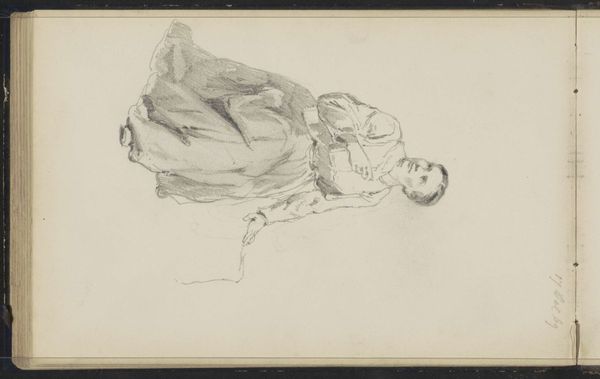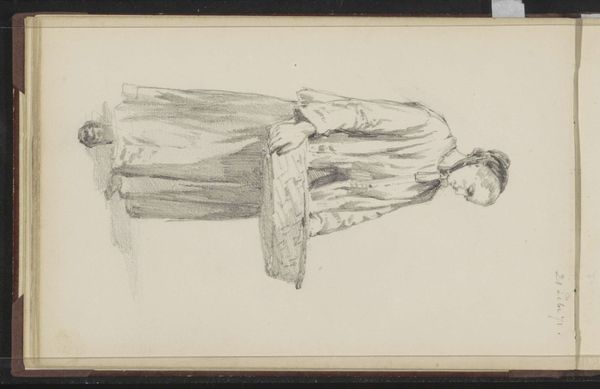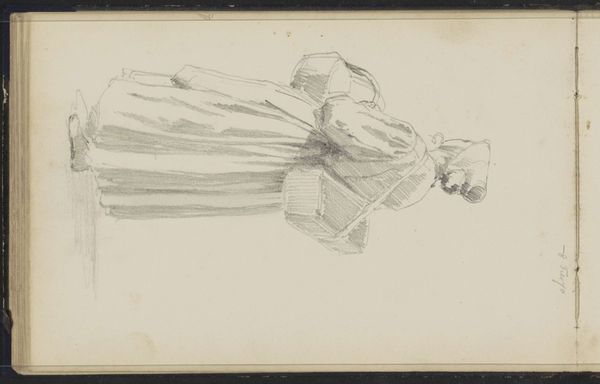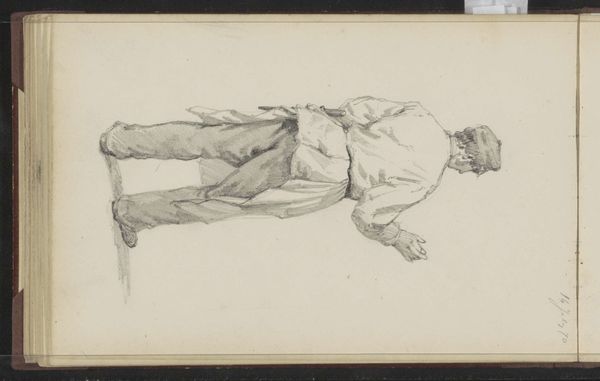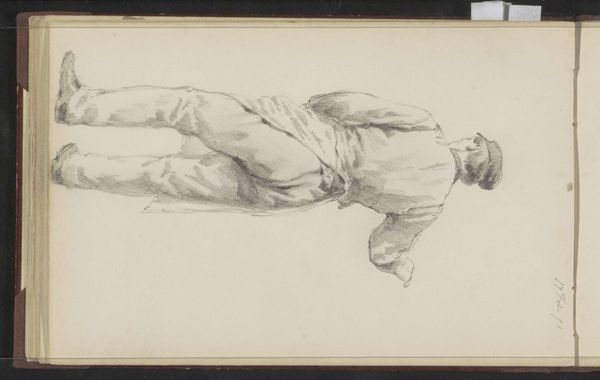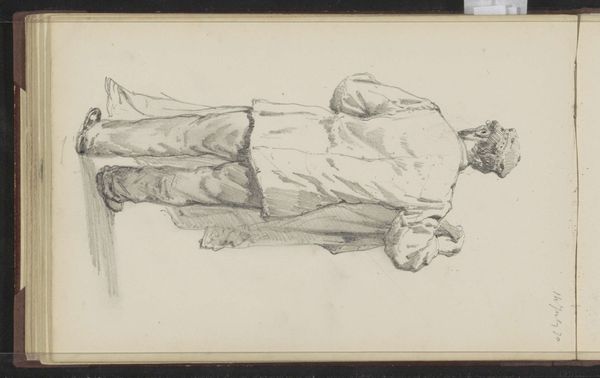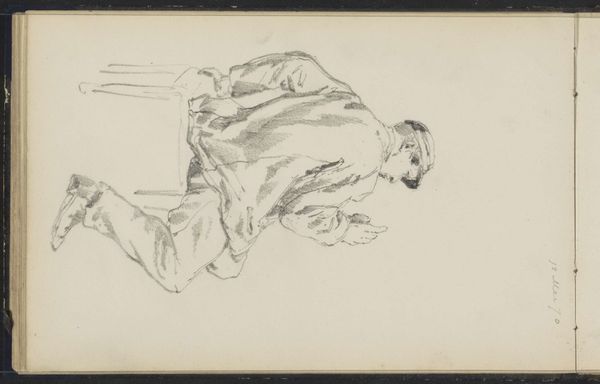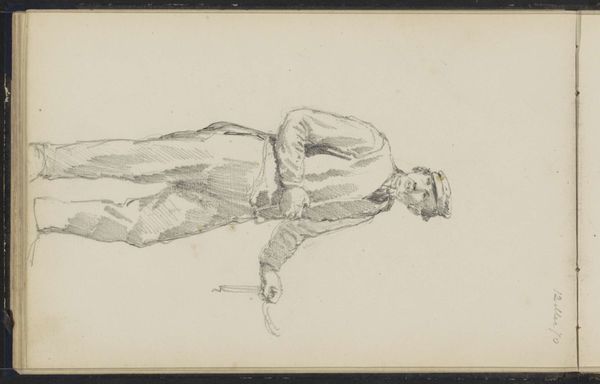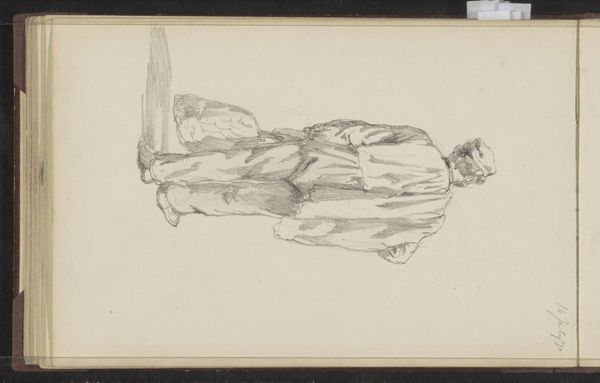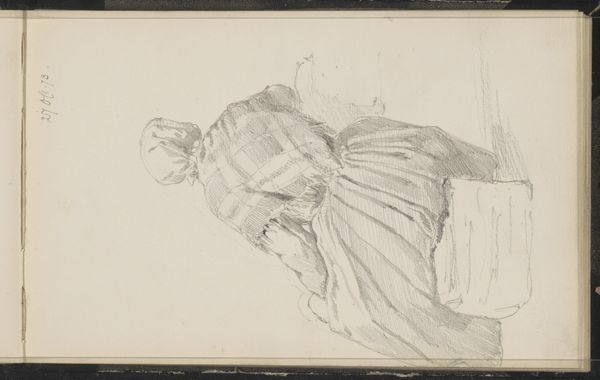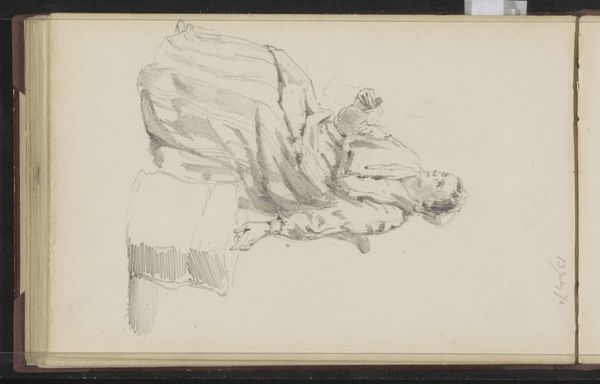
Copyright: Rijks Museum: Open Domain
Editor: This is a pencil drawing titled "Meisje met een boek," or "Girl with a Book," possibly from 1870-1872 by Cornelis Springer. The sketch is fairly simple, focusing on the girl's form. What social narrative do you see here? Curator: Well, immediately, I'm drawn to the quiet intimacy of the scene. We have a young girl, presumably from a certain class, absorbed in a book. The act of reading itself becomes a symbol of empowerment, of access to knowledge, especially considering the historical context. How does this image challenge or reinforce ideas about female education in the 19th century? Editor: It feels... subversive? I guess I wouldn’t expect a girl in that time to be reading so casually, even though she is turned away from us. Curator: Precisely. But let’s delve deeper. What does it mean to depict a young woman engaging in intellectual pursuits during a time of immense social change, especially concerning women's roles and their representation in art? Could this image be interpreted as a quiet act of resistance against traditional expectations? Is she just passively reading? Or is it changing her and forming her? Editor: So you're saying it is more than just a portrait; it is a subtle comment on women's education? Curator: Exactly. It’s about viewing her humanity. And also acknowledging that this representation, itself, reinforces power dynamics based on who gets to look, who gets to be seen, and whose story is told. What story do you think this image is telling us? Editor: I see what you mean. It is easy to see this as a simple, nice drawing, but when you look at it with these historical and social factors in mind, it reveals many complex ideas about identity and representation. Thank you for revealing how we must consider historical power dynamics at play in creating and viewing art. Curator: It is important to consider the subtle power structures inherent in representation, prompting us to interrogate whose stories get told and how. Art provides critical insights to cultural norms, gender, and class identity.
Comments
No comments
Be the first to comment and join the conversation on the ultimate creative platform.
